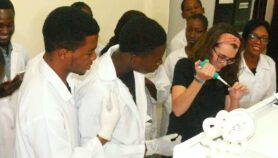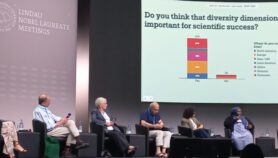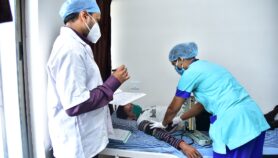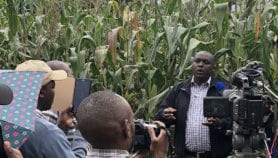By: Linda Nordling
Send to a friend
The details you provide on this page will not be used to send unsolicited email, and will not be sold to a 3rd party. See privacy policy.
To meet new biodiversity targets, African countries must plug science gaps and align goals with climate deals, says Linda Nordling.
In 2010, the UN's International Year of Biodiversity, the world is expected to agree new goals for preserving species.
The Conference of Parties to the Convention on Biological Diversity (CBD), scheduled for late October next year in Nagoya, Japan, will also try to establish an international framework for ensuring more equitable access to, and sharing of, genetic resources.
But like many regions, Africa is already certain to fail to "achieve, by 2010, a significant reduction of the current rate of biodiversity loss" — the last CBD target set in 2002. Scientists say extinction rates are accelerating rather than slowing down and biodiversity-rich areas such as Africa are particularly vulnerable to the decline.
Will new targets for 2020 be any more achievable?
Tangible targets
The new 2020 targets, now in draft form, do look better than the old one, which was vague and difficult to measure.
They are more definite — for example, reducing deforestation and forest degradation by 50 per cent, and ensuring that at least 15 per cent of land and sea areas, including the most critical habitats, are protected.
They also address the underlying causes of biodiversity loss — economic drivers, poverty and lack of education. All this is good for Africa.
But the targets will also add pressure for African countries to pour scientific and political resources into biodiversity protection.
Engaging Africa
On the plus side, the CBD negotiations could help raise funds for Africa because they will try to put a price tag on biodiversity and so create financial incentives for developing countries to protect their biological resources.
But African countries have been slow to engage in designing the new targets. Very few submitted concrete proposals at first, says Robert Höft, environmental affairs officer at the CBD secretariat in Montreal, Canada.
That changed earlier this month (11–12 December) when nearly 30 African countries sent representatives to a meeting in Cairo, Egypt to discuss the most recent blueprint of the new targets.
The delegates were particularly keen to establish more support structures for implementing biodiversity protection — "things like capacity building, financial resources and technology transfer," says Höft.
Capacity is very important for most African countries. A 2006 report from Tanzania found that a lack of financial resources and expertise were either 'limiting' or 'severely limiting' the implementation of all aspects of the CBD.
Another report, by Sudan, earlier this year identified the major barriers as a lack of educational resources, poor policy coordination and thoughtless exploitation of sensitive habitats.
Science gaps
But Africa is also hamstrung by a lack of scientific capacity. There is a dearth of understanding of how African ecosystems work, especially when it comes to the continent's less charismatic animals and plants, which are rarely seen from a safari jeep.
Underground organisms, parasites, and invasive species are poorly understood, says John Donaldson, chief director of applied biodiversity research at the South African National Biodiversity Institute.
But these species are vital to safekeeping the continent's biological heritage, he says. Termites, for example, play an important role in recycling nutrients, creating habitats for other organisms and providing a rich food source for predators.
International science collaboration could help map these biological resources. But regulations against 'biopiracy' — foreigners exploiting biological resources for commercial gain — have made it harder for scientists elsewhere to help their African colleagues.
"There is a very fine balance between keeping people out who will exploit your natural resources for their own gain, and allowing scientists in who can help you understand your resources," says Donaldson. Clear rules about access and benefit-sharing should help scientists find ways around tight biopiracy regulations.
It is also hard to create networks of African experts, he adds. In some countries it is often easier to make contacts through externally-funded projects — but these do not necessarily address local priorities and policies.
Common development goals
The capacity gaps — both financial and scientific — must be addressed by the new CBD targets. But the targets must also be tied to national development goals, says Donaldson.
For example, there is a strong push from environmentaliststo strengthen links between biodiversity and human wellbeing by focusing targets on ecosystem services (the benefits from nature such as clean air or flood regulation).
"Such targets would enable African countries to make a better connection between the state of their biodiversity and other pressing issues such as poverty alleviation and economic development," says Donaldson.
External support will be essential, adds Höft. But he warns that the many negotiations calling on developed countries to support developing ones could have caused 'commitment fatigue' among donors.
There is a danger that if the next big bill on biodiversity is not aligned with climate deals and aid flows, it will be ignoredby the finance ministers in developed countries, he says.
African policymakers will need to convince donors that any support they receive — through aid, climate change adaptation funds or biodiversity benefit-sharing agreements — will contribute to the same development goals.
For Africa, 2010 must not only be the year of biodiversity, but the year of coherent policymaking.
.jpg)
Journalist Linda Nordling, based in Cape Town, South Africa, specialises in African science policy, education and development. She was the founding editor of Research Africa and writes for SciDev.Net, The Guardian, Nature and others.
More on Capacity building
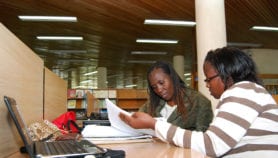
Script media release
Journalists offered ‘big break’ mentoring opportunity from Radio Nigeria
03/04/19






